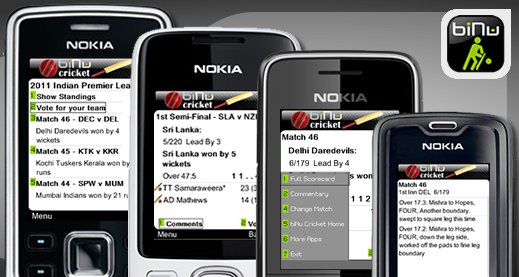Let’s put a smartphone into a feature phone and beat Moore’s Law
What percentage of mobile phone users in Africa are smartphones?- A common question that comes up here in Silicon Valley to try belittle the growth of Africa’s mobile sector. My typical response has always been- “It’s low now, but Android phones are selling like hotcakes and it’s only a matter of time till the price comes down and the masses can afford a smartphone.”
I am starting to revise my view. What is actually happening is that there’s a race for cloud services in demand now vs the realities of Moore’s law. The law which states that the price of computer chips will half for the same amount of computing power every 18 months– has remained true over the last 40 years, driven the tech industry and has enabled computing devices to get cheaper, smaller and more powerful and hence deliver more functionality. 5 years ago, we barely had colour display phones in the market, now they are very common. In the next “few years” we will likely see smartphones achieve mass adoption. That is if manufacturers decide to design for that price point faster. Nokia has a dominant advantage in Africa in the supply chain and distribution of feature phones which are keeping phones as low as $30- and as long as they keep selling in volume, Nokia might not need to push smartphones to Africa so quickly. It might be quite hard for smartphones, which come loaded with large touch screens, sensors such as GPS, acceleratomers etc… to hit a reasonable price point to entice users to upgrade even if Moore’s law is on the device’s side. Oh and don’t forget battery life- smartphones are no saint when it comes to power usage. Realities of the supply chain, distribution and current usage patterns might mean we have feature phones as dominant phones in Africa for quite some time. Many African consumers are price sensitive after all even if they aspire for a smartphone. Can we get smartphones below $50?
In the meantime, the thirst for cloud services that internet connectivity brings is here today for Africans to consume, and this means that those who are using feature phones might get left out of the cloud services being delivered and optimized via smartphones apps.
Earlier this year- Facebook acquired mobile company Snaptu which delivers Facebook and other services to feature phones (up to 2,500 different devices)- this is a huge validation from a cloud company of the importance, growth and staying power of feature phones. And the number of Facebook users in Africa are growing at double digit rates, month over month.
I came across another company today that is betting to beat Moore’s law as to what devices will deliver cloud services to the masses first. That company is Binu out of Australia. The idea is to squeeze smartphone like applications that connect to the cloud through java enabled feature phones. The idea is brilliant- it helps deliver cloud service functionalities facebook, twitter and other content including e-books such as Qur’an and Holy Bible bundled via one simple app- they boast 10X the speed and 10X less data- and according to their blog- they have exceeded 2M downloads/month(15M to date) in less than a year since they have been in operation. This reminds me why the Opera browser has over 70% marketshare in Africa currently- efficiency pays in Africa. Even when Africans finally upgrade to smartphones- their browser brand of choice is likely to remain Opera which saw them through their feature phone usage days.
Ultimately smartphones will get to Africa in the masses thanks to Moore’s law- but it doesn’t mean cloud services that are available today cannot be delivered on current features phones- 18 months can be a long time when the demand for the end services change even faster. In fact services like Binu, may in fact convince phone manufacturers there is a demand for the cloud end services and hence push the design constraints for features to behave even more like smartphones but retain the price point and battery life of features phones. Think the Wii vs PS3/X-box. Its not about how big your chip is but what you can do with it to delight customers.
